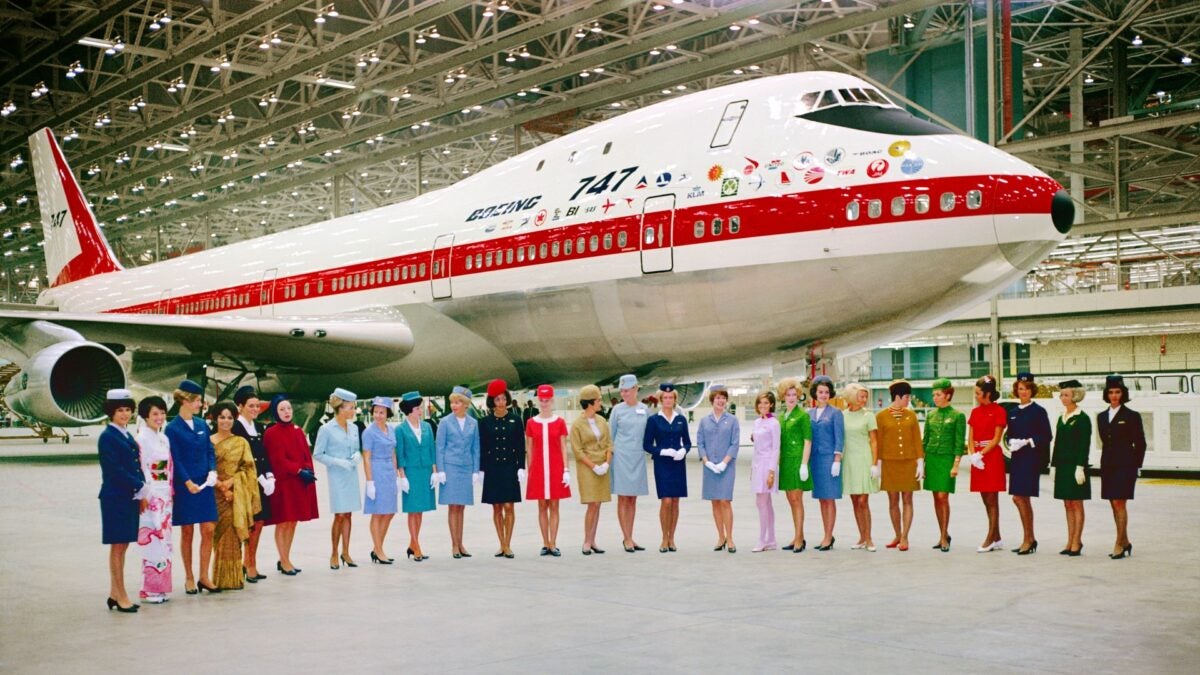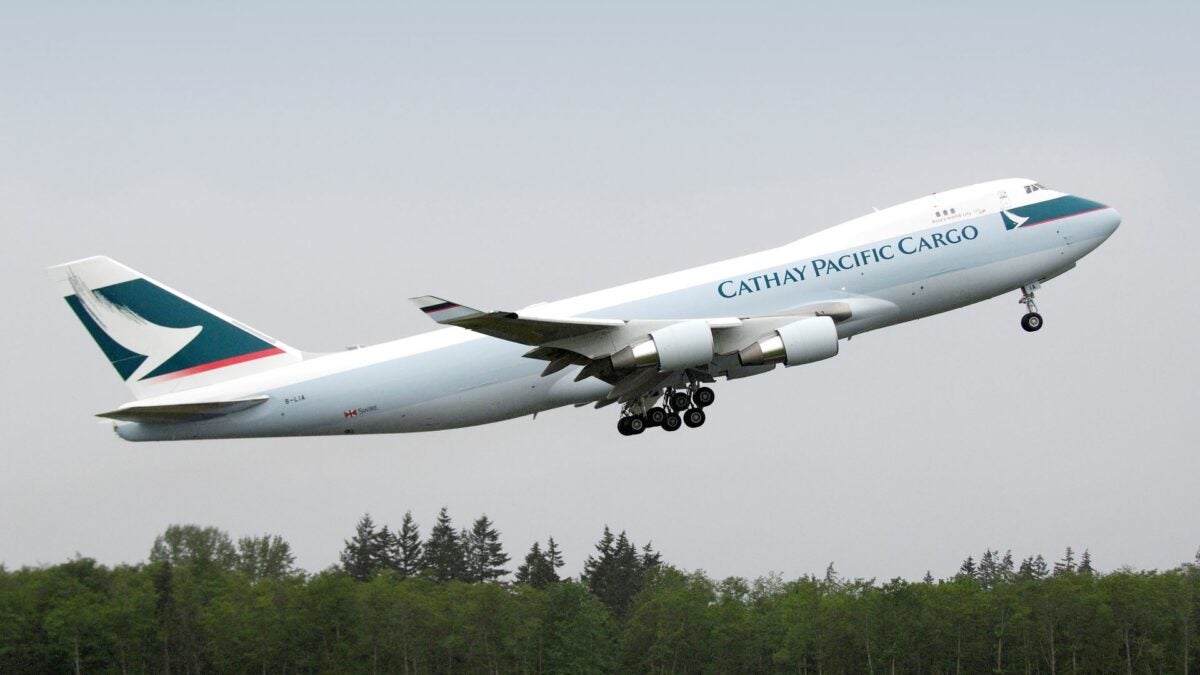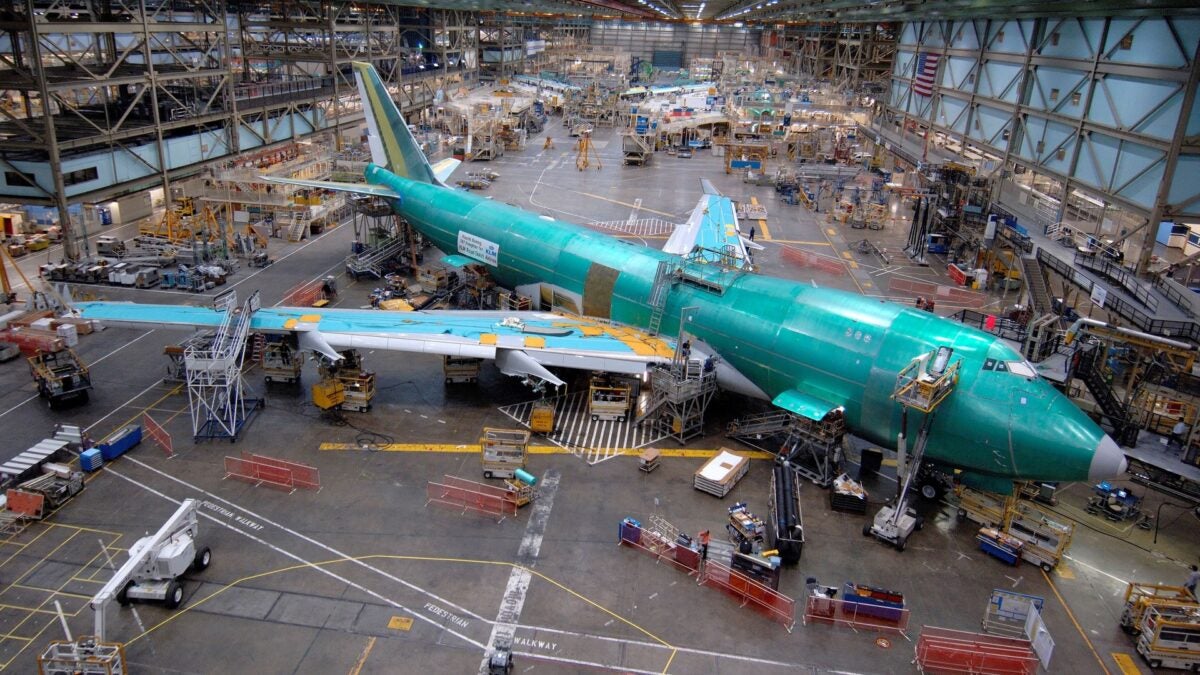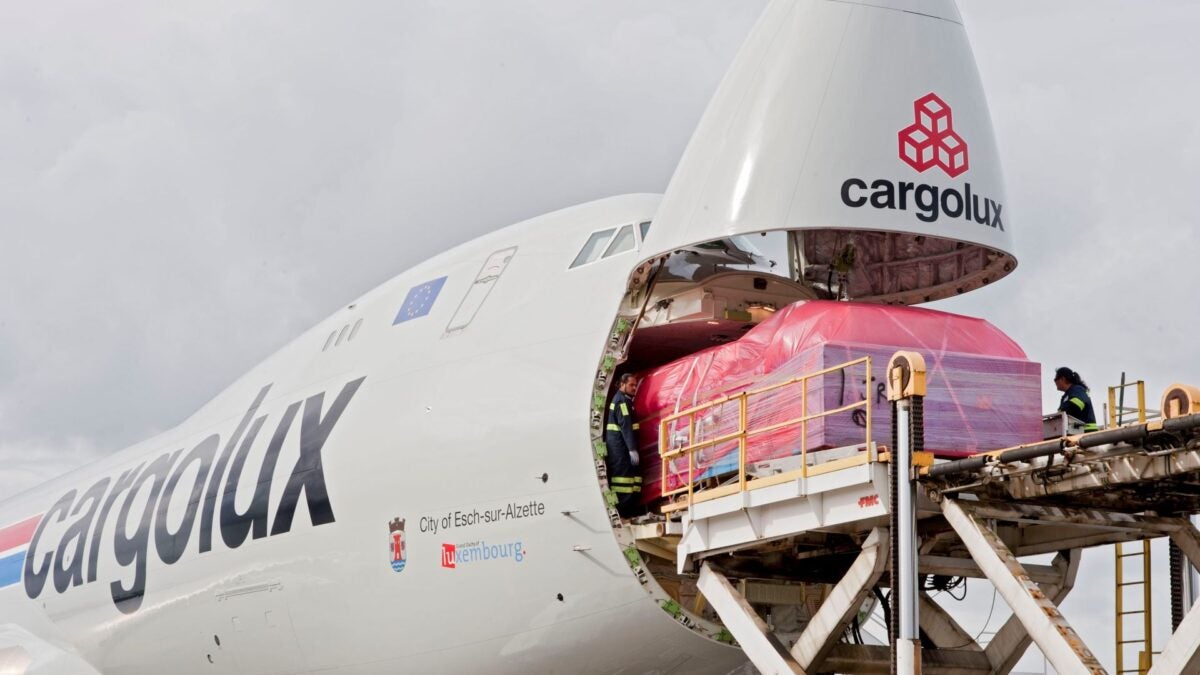Freight News:
End of production era, but 747 freighters will fly for decades
Boeing will hand over the last 747 ever made to Atlas Air on Tuesday, marking the end of an era for an iconic aircraft that transformed air travel and made it accessible to the average person. From the 747-100 to the 747-400, and then the modern 747-8, Boeing built both passenger and freighter versions. And many used 747 passenger jets were eventually converted to freighters by third-party engineering firms.
A live webcast of the delivery ceremony will take place at 4 p.m. EST and can be watched here. Thousands of people — including current and former employees as well as customers and suppliers — will be on hand at the factory in Everett, Washington, to mark the historic occassion.
The 747 was originally designed with freight in mind, unlike most planes that are built for passengers with a cargo variant.

Flying the 747 was an experience that no other aircraft offered, with a staircase to the upper deck. It was so culturally and economically significant, and had such a unique figure, that it had its own nickname: Queen of the Skies.
Air Force One, carrying U.S. presidents around the world for decades, is a 747. And the plane was regularly seen on TV ferrying the Space Shuttle for NASA to Florida for launches. In 2007, the Dreamlifter, a specially modified 747-400 used to transport major assemblies of the all-new Boeing 787 Dreamliner, was certified by the Federal Aviation Administration.
Boeing (NYSE: BA) began deliveries of the 747-8 freighter a decade ago. It is 18.3 feet longer than the 747-400 and is able to accommodate four additional main-deck pallets, and three lower-hold pallets. It is powered by the same type of engines as those on the 787 Dreamliner.
Although Boeing is no longer making the 747, and most passenger versions are retired in favor of more fuel-efficient twin-engine planes, the 747-8s will grace the skies for several more decades.
All-cargo airline Atlas Air will operate the final production 747 freighter for global logistics giant Kuehne + Nagel under a dedicated contract. The plane actually bears the livery of Apex Logistics, a Hong Kong-based airfreight forwarder K+N acquired in 2021. Atlas received the final four 747-8s produced by Boeing. Two are assigned to Kuehne + Nagel and one is flying under the control of Cainiao, the logistics arm of e-commerce platform Alibaba.
Atlas Air, Purchase, New York, is the largest operator of 747 aircraft in the world. As of Tuesday it will have 43 747Fs, including nine -8s. In total it has 50 jumbo jets, including seven 747s it flies as passenger charters for the military, sports teams and other airlines, according to the FlightRadar24 database.

Other airlines with large 747 cargo fleets include Cargolux, Cathay Pacific, Kalitta Air, Korean Air and Singapore Airlines.
People are reminiscing about their memories and impressions of the 747.
Graham Perkins, a senior vice president for sales and marketing at Atlas Air (NASDAQ: AAWW), grew up near the airport in Calgary, Alberta, and fell in love with the 747 at an early age.
“All three major Canadian carriers flew the B747’s into my city, and I would plane spot with my binoculars to see these giants coming and going,” he said in Atlas Air’s Tailwinds blog. “To say I was in awe of the size and grace of these aircraft would be an understatement. … And it is something I still feel to this day every time I see a B747.”

Today, Graham works with shippers who need the 747 for airlift.
“Knowing the capabilities and performance of these incredible aircraft makes my job to place these planes that much more enjoyable,” said Graham, who celebrated his 20th anniversary with Atlas in September. “It is a source of pride to know that we operate the largest fleet of B747s in the world, and our customers value this from us.
“A lot of [Atlas’] success and attitude to win was developed on the back of the B747 itself. We should all be very proud of that and very thankful to this incredible aircraft that changed aviation forever. Luckily, we will see our latest deliveries flying for the next 30 to 40 years, so our success will continue well into the future.”
One traveler posted on Twitter, “Lost count of the times I flew transatlantic on the #B747, just took it for granted at the time but now I feel thankful and fortunate to have had the experience.” On LinkedIn, New York airfreight consultant Barry Medwed, said, “Absolutely my favorite (KLM Combi). Truly a queen. My first flight as a teenager, I think was on 747 that had a piano and cocktail lounge, incredible.”
| By the Numbers | |
|---|---|
| 55 | Age — Boeing started production in 1967. |
| 1,574 | Number manufactured. |
| 4 | Number of engines. |
| 100+ | Number of customers. |
| 118 million | Number of collective flight hours. |
| 2 | Days to sell out limited edition “Boeing 747 Forever Incredible” commemorative coin. |
| 3 | The number of World Cup soccer fields the 747-8 can travel in one second. |
| 6 | The 747-8’s tail is as tall as an average six-story building. |
| 303,700 | Payload in pounds of the 747-8 freighter. |
| 10,767 | The number of solid gold bars from Fort Knox the 747-8 freighter can carry. |
| 16 | Percent fuel efficiency improvement of the 747-8 from the 747-400 freighter. |
| 24 | Extra metric tons of payload the 747-8 can carry versus the 747-800. |
Stan Wraight, who now runs aviation consulting firm SASI World, wrote on LinkedIn that he fondly remembers sitting with former Atlas Air owner and CEO Michael Chowdry in Seattle for the delivery of the company’s first 747-400, signing the formal acceptance documents and receiving ceremonial keys to the cockpit. “I had the pleasure of sending those keys to John Dietrich, current CEO of Atlas, recently.”

Innovations
First commercial widebody freighter and first long-haul, international freighter … First twin-aisle passenger plane, which lowered per-seat cost and made travel more affordable for the masses … First nose-loading freighter to enable loading of extra-large, nonstandard shipments … Hemispherical Hump — the 747 was originally designed as a freighter with ideal loading through the tilt-open nose. Engineers determined the best place for the flight deck was on its second level so the nose door could open without interference, which explains the iconic hump … First full-motion simulator to provide pilots immersive flight training … High-Bypass Turbofan Engines — These more efficient, quieter engines helped improve takeoff acceleration.
Hugely privileged to have flown on, and flown many @BoeingAirplanes 747’s. Early next week, with other invited guests, I’lI be saying goodbye to Jumbo as #TheLast747 leaves the factory. From Air Force One, to The Last One, I’ve been on them all. It’ll be a sad day. #ThankYou747 pic.twitter.com/qG0shuUVPz
— Scott Bateman MBE
(@scottiebateman) January 27, 2023
Click here for more stories by Eric Kulisch.
RECOMMENDED READING:
Cargolux orders 10 Boeing 777-8 freighters to replace older jumbos
The post End of production era, but 747 freighters will fly for decades appeared first on FreightWaves.
Source: freightwaves - End of production era, but 747 freighters will fly for decades
Editor: Eric Kulisch